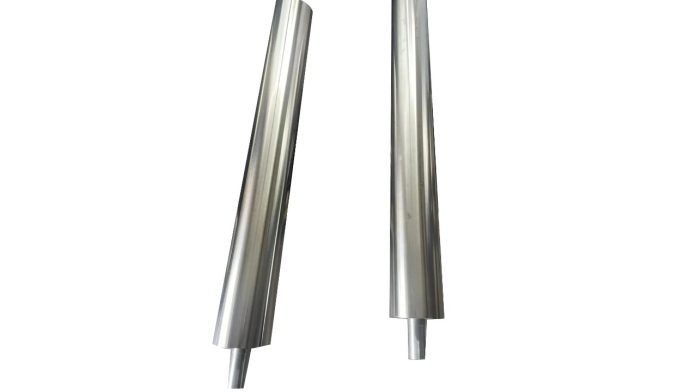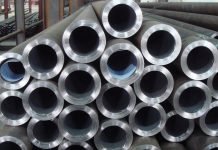Magnetic head pulleys play a crucial role in various industries by improving the efficiency of material handling systems. Their ability to separate ferrous metals from non-ferrous materials makes them indispensable for applications such as recycling, mining, and waste management. Like any mechanical equipment, the durability and performance of magnetic head pulleys are essential for optimizing efficiency and minimizing downtime. In this article, we will explore the lifespan of these pulleys, the factors that influence their durability, and how to extend their service life.
Magnetic head pulleys are specialized equipment used in conveyors to separate ferrous metals from a stream of materials. These pulleys are positioned at the end of a conveyor belt, where they create a strong magnetic field to attract ferrous metals (like iron and steel) as the materials pass by. This magnetic separation process ensures that the non-ferrous materials (such as plastic, glass, or wood) continue moving along the conveyor, while the ferrous materials are collected for further processing or recycling.
These pulleys are designed to improve the efficiency of material handling and reduce the risk of contamination in end products, particularly in industries that deal with bulk materials or waste.
Magnetic head pulleys are specially designed components used in conveyor systems to separate ferrous metals (like iron and steel) from a mix of materials. Positioned at the end of a conveyor belt, these pulleys generate a strong magnetic field that attracts and pulls ferrous materials while non-ferrous items (such as plastic, glass, or wood) continue along the belt. This magnetic separation process ensures a cleaner, more efficient operation by preventing contamination in end products.
Magnetic head pulleys are commonly used in industries that handle bulk materials, waste, or recycling. They are essential for reducing the presence of metal contaminants in the final product and ensuring safer, more efficient operations.
Several factors determine how long a magnetic head pulley will last, including the materials used in its construction, operating conditions, maintenance practices, and usage frequency.
- Material Quality
- Operating Conditions
- Maintenance Practices
- Frequency of Use
The lifespan of a magnetic head pulley is mainly affected by material quality and operating conditions. Pulleys made from high-quality, corrosion-resistant materials like stainless steel last longer, while those made from lower-quality materials are more prone to wear and damage. Harsh conditions such as extreme temperatures, humidity, and exposure to corrosive substances also shorten the pulley’s lifespan, especially in heavy-duty operations or when handling abrasive materials.
Routine maintenance, including regular cleaning, inspections, and lubrication, is crucial to extending the pulley’s life. Frequent use or heavy-duty operations accelerate wear, while pulleys used in lighter applications last longer with less strain on their magnetic field and structure.
Under normal operating conditions, magnetic head pulleys typically last 5 to 10 years. However, this range can vary depending on factors such as material quality, maintenance practices, and operating conditions. Pulleys exposed to extreme temperatures, corrosive materials, or excessive wear may experience a shorter lifespan, while those in milder environments with proper care could last longer.
To ensure your magnetic head pulleys provide reliable service for as long as possible, consider these best practices:
- Routine Maintenance Tips
- Regular Cleaning: Clean the pulley surface regularly to remove any debris or contaminants that could interfere with its magnetic performance.
- Lubrication: Lubricate moving parts to reduce friction and prevent premature wear.
- Inspection: Regularly inspect the pulley for signs of wear, cracks, or damage. Addressing minor issues early can prevent costly repairs.
- Upgrading or Replacing Parts
Rather than replacing the entire pulley, replacing specific parts—such as the magnet, bearings, or shell—can extend the life of the system. In some cases, modern technological upgrades may improve efficiency or increase magnetic strength, making the pulley more effective.
- Proper Installation and Handling
Proper installation is critical for ensuring the pulley’s long-term performance. Misalignment or improper setup can lead to excessive wear, misfunctioning, or premature failure. Additionally, careful handling during maintenance and operational processes helps avoid physical damage that could affect its performance.
Magnetic head pulleys are essential tools for efficiently separating ferrous metals from materials in bulk handling systems. Understanding the factors that impact their durability and performance is key to maximizing their lifespan. By ensuring the use of high-quality materials, performing routine maintenance, and operating the pulley under optimal conditions, businesses can extend the life of their equipment and reduce downtime. Proper care and attention to magnetic head pulleys not only improve operational efficiency but also reduce the overall cost of ownership, making them a smart investment for any industry.




